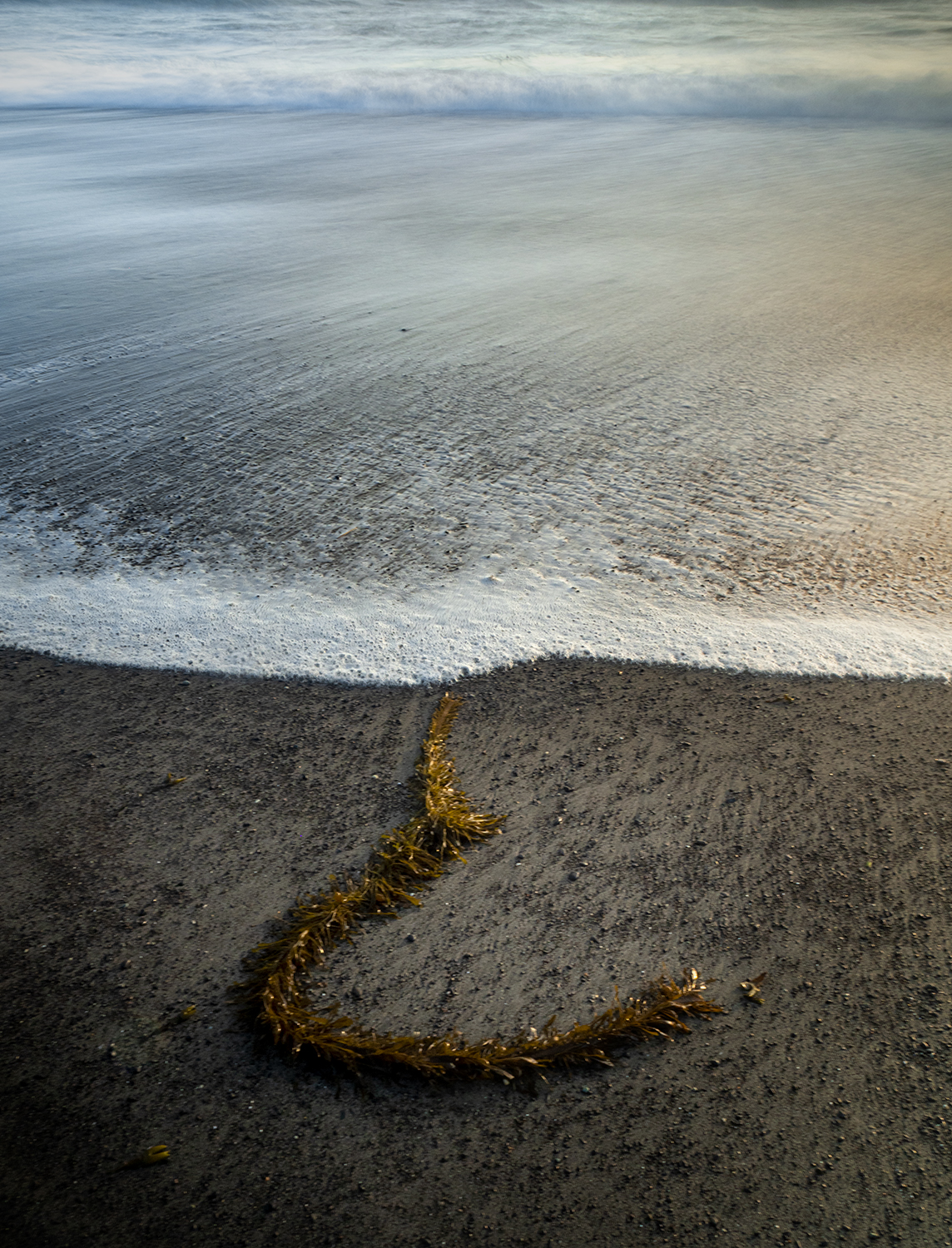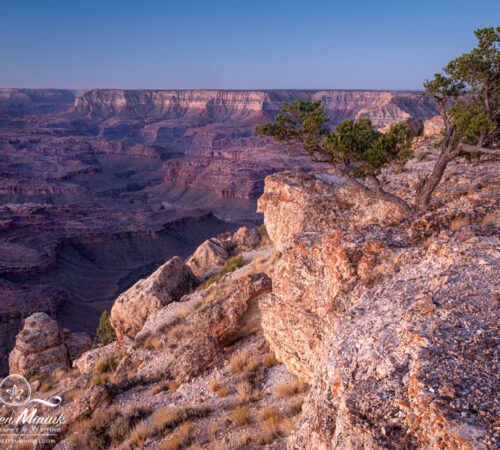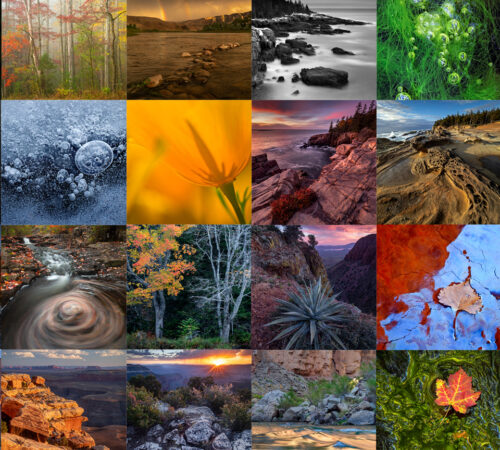Bubbles’ Bookshelf

Dear Bubbles,
I’m relatively new to photography. Do you have any good instructional books you’d recommend reading? I mostly like doing landscape photography. Thanks.
A Newbie
Dear A Newbie:
Hooray! Welcome to the wonderful world of photography! I hope you find new ways of discovering, celebrating, and expressing meaning about the landscape and world around you through this art form.
Most photographers start by learning the technical and technological aspects of their craft. Some of us slog through our camera’s instruction manuals. Others may take a class or workshop. As we come up to speed, we experiment with our new ideas in the field. When we visit beautiful locations with hopes of making a photograph that captures the essence of our feelings about the scenes, we’re often disappointed. What we see usually doesn’t come out of our cameras and our mental energy is consumed with questions like “What lens should I use? What’s an aperture? How do I even turn on this camera?”
This can be a frustrating time (at least it was for me and my two marbles in my brain). Embrace the questions that are making you crazy and focus on finding the answers. The results will come. Photography requires a blend of technical and creative knowledge. After all it’s difficult, if not impossible, to understand the creative opportunities and express a creative vision if we don’t understand how to use our tools at our disposal.
Reading something other than our instructional manuals not only helps us become technically proficient with photography techniques and our cameras, but it also helps feeds the first step in the creative process. The Wallas Model of Creativity describes the creative process in four steps: preparation, incubation, illumination/inspiration, and verification. I translate this into my photography process as follows:
- Preparation: Fill your brain with knowledge and ideas.
- Incubation: Visualize your picture before you make it. Think, think, think, then stop thinking.
- Illumination/Inspiration: Encourage the “aha” moment on location by relaxing, observing, and connecting. Make a photograph.
- Verification: Critique your image. Did the idea work? Refine as needed into your vision.
Creativity experts aren’t certain how the “aha” moment occurs in step 3, that moment of sudden insight, that moment when we feel compelled to make a photograph. They do agree, though, that nothing comes from nothing, that new ideas do not magically appear from thin air, prancing unicorns in the sky, or divine intervention. Creative ideas come from putting together two existing ideas in new and different ways (and the release of mental fixation).
Arthur Koestler suggests in his book, The Act of Creation, “The creative act does not create something out of nothing; it uncovers, selects, reshuffles, combines, synthesizes already existing facts, ideas, faculties, and skills.” He called this the “bisociation of matrices.” Cognitive scientists, Gilles Fauconnier and Mark Turner, expanded on Koestler’s idea and termed their revised theory “conceptual blending” which was outlined extensively in their book, The Way We Think. This intersection of random ideas occurs subconsciously when we relax our prefrontal cortex. Our prefrontal cortex goes to sleep when you do so we most often experience conceptual blending through our dreams. We also experience our prefrontal cortex reengaging when we wake up and say, “Wow, that was a weird dream.” Your brain tries to filter “stupid ideas.” As artists, we want to encourage those “stupid” ideas! We want to literally dream while we’re awake.
(To read more about the Wallas Model of Creativity on Dear Bubbles, check out “Keeping it Fresh“. For more about conceptual blending, read “It Takes Two“.)
And as Jack Foster said, if ” ‘…a new idea is nothing more or less than a new combination of elements,’ then it stands to reason that the person who knows more elements is more likely to come up with a new idea than a person who knows fewer old elements.” No matter what you call it, if we don’t have a rich pool of raw materials in which to pull from, we limit our ability to connect the landscape in fresh and unique ways. Reading books, and not just photography-related books but books from any genre, helps feed your brain new technical and creative ideas you can put to good use in your work.
It may go without saying, but I’ll say it anyway: I spend most of my time as a photographer not clicking the shutter but rather being a hunter and gatherer of knowledge and ideas. Every. Waking. Moment. Even without a camera in hand. My only expectation of myself (when it comes to photography), whether I’m at home or in the field, is that I’m learning and growing. I trust this creative process and that my brain will know what to do with “more elements” and a big pool of raw materials (once I chill out). The results come.
So asking if I have good books to recommend is akin to asking if I like bubbles. Of course I do! I love books! As it turns out, I am afflicted with both bibliomania and tsundoku…there are worse fates in life.
To help put together this photographic resource, I’ve scoured my home library for print books and Kindle for eBooks. It’s not a complete list of all the wonderful books out there that could provide inspiration, by any stretch of the imagination, but it’s enough to get you started (or in my case, excitedly reread).
Note that some of these books are out of print and hard to find. If you can find a used copy in any condition, grab it. It’ll be worth your time and money.
Some of the books may contain out of date information. For example, guidebooks are dated the second they get printed. Film-based books are often overshadowed by digital-focused books. They are still worth reading for the concepts and ideas. You might simply need to stretch your brain to translate and apply your acquired knowledge into our technology-centric world. It’d be a good challenge. I know you’re up for it!
Without further ado, I present to you, drumroll please….The Bubbles Bookshelf:
Photography Basics:
Examples: The Making of 40 Photographs by Ansel Adams
Introduction to Digital Photography by Joe Ciaglia
Digital Photography Complete Course: Learn Everything You Need to Know in 20 Weeks by David Taylor
Mindfulness/Observation:
Listening to Nature: How to Deepen Your Awareness of Nature by Joseph Bharat Cornell
The Invisible Gorilla: And Other Ways Our Intuitions Deceive Us by Christopher F. Chabris
Focus: The Hidden Driver of Excellence by Daniel Goleman
Wherever You Go, There You Are: Mindfulness Meditation in Everyday Life by Jon Kabat-Zinn
Thinking, Fast and Slow by Daniel Kahneman
Mastermind: How to Think Like Sherlock Holmes by Maria Konnikova
Inattentional Blindness by Arien Mack and Irvin Rock
Light, Gesture, and Color by Jay Maisel
Adventures in Seeing: How the Camera Teaches You to Pause, Focus, and Connect with Life by Kim Manley Ort
How to be an Explorer of the World by Keri Smith
Zen Mind, Beginners Mind: Informal Talks on Zen Meditation and Practice by Shunryu Suzuki and David Chadwick
Zen Camera: Creative Awakening with a Daily Practice in Photography by David Ulrich
The Art of Noticing: 131 Ways to Spark Creativity, Find Inspiration, and Discover Joy in the Everyday by Rob Walker
The Little Book of Contemplative Photography: Seeing with Wonder, Respect, and Humility by Howard Zehr
Visual Design/Composition:
See It: Photographic Composition Using Visual Intensity by Ellen Anon and Josh Anon
Art and Visual Perception: A Psychology of the Creative Eye by Rudolph Arnheim
Picture This: How Pictures Work by Molly Bang
Notan: The Dark-Light Principle of Design by Dorr Bothwell and Marlys Mayfield
Composition: Understanding Line, Notan and Color by Arthur Welsey Dow
Photographically Speaking: A Deeper Look at Creating Stronger Images by David DuChemin
The Practice of Contemplative Photography: Seeing the World with Fresh Eyes by Andy Karr and Michael Wood
Wabi Sabi for Artists, Designers, Poets, & Philosophers by Leonard Koren
Vision and Art: The Biology of Seeing by Margaret Livingstone
Photographing and the Art of Seeing by Freeman Patterson
Composition of Outdoor Painting by Edgar Payne
Perception & Imaging by Richard D. Zakia
Light and Color
Interaction of Color by Josef Albers
Color: A Natural History of the Palette by Victoria Finlay
Light—Science and Magic: An Introduction to Photographic Lighting by Fil Hunter, Steven Biver, and Paul Fuqua
Color and Light in Nature by David K. Lynch and William Livingston
The Hot Shoe Diaries: Big Light from Small Flashes by Joe McNally
Seeing the Light in Outdoor Photography ebook by Colleen Miniuk
The Secret Lives of Color by Kassia St. Clair
Creativity and Creative Inspiration:
The Neuroscience of Creativity by Anna Abraham
Why People Photograph by Robert Adams
How to Fly a Horse: The Secret History of Creation, Invention, and Discovery by Kevin Ashton
Art & Fear: Observations on the Perils (and Rewards) of Artmaking by David Bayles and Ted Orland
The Tao of Photography: Seeing Beyond Seeing by Philippe L. Gross and S. L. Shapiro
Wired to Create: Unraveling the Mysteries of the Creative Mind by Scott Barry Kaufman and Carolyn Gregoire
Aperture Magazine Anthology—The Minor White Years 1952-1976 edited by Peter C. Bunnell
Spark: How Creativity Works by Julie Burstein
The Artist’s Way: A Course in Discovering and Recovering Your Creative Self by Julia Cameron
The Aesthetic Brain: How We Evolved to Desire Beauty and Enjoy Art by Anjan Chatterjee
Creativity: Flow and the Psychology of Discovery and Invention by Mihaly Csikszentmihalyi
Finding Flow: The Psychology of Engagement with Everyday Life by Mihaly Csikszentmihalyi
Flow: The Psychology of Optimal Experience by Mihaly Csikszentmihalyi
Creative Thursday: Everyday Inspiration to Grow Your Creative Practice by Marisa Anne Cummings
The Creative Curve: How to Develop the Right Idea, at the Right Time by Allen Gannett
A Curious Mind: The Secret to a Bigger Life by Brian Grazer and Charles Fishman
The Way We Think: Conceptual Blending and the Mind’s Hidden Complexities by Gilles Fauconnier and Mark Turner
How to Get Ideas by Jack Foster
The Power of Thinking Differently: An Imaginative Guide to Creativity, Change, & the Discovery of New Ideas by Javy W. Galindo
I is an Other: The Secret Life of Metaphor and How it Shapes the Way We See the World by James Geary
How to Think Like Leonardo da Vinci by Michael J. Gelb
Big Magic: Creative Living Beyond Fear by Elizabeth Gilbert
On Intelligence by Jeff Hawkins
Photography Changes Everything by Marvin Heiferman
Letting Go of the Camera by Brooks Jensen
The Creative Life in Photography by Brooks Jensen
Where Good Ideas Comer From: The Natural History of Innovation by Steven Johnson
The Cambridge Handbook of Creativity by James C. Kaufman and Robert J. Sternberg
Keep Going: 10 Ways to Stay Creative in Good Times and Bad by Austin Kleon
Steal Like an Artist: 10 Things Nobody Told You About Being Creative by Austin Kleon
Make it Till You Make It: 40 Myths and Truths About Creating by Brendon Leonard
Why? What Makes Us Curious by Mario Livio
The Zen of Creativity: Cultivating Your Artistic Life by John Daido Loori
Making Love with Light by John Daido Loori
Imagination Firsts: Unlocking the Power of Possibility by Eric Liu and Scott Noppe-Brandon
The Act of Creation by Arthur Koestler
Brain Rules: 12 Principles for Surviving and Thriving at Work, Home, and School by John Medina
Creative Thinkering: Putting Your Imagination to Work by Michael Michalko
Light on the Landscape by William Neill
The Creative Fight: Create Your Best Work and Live the Life You Imagine by Chris Orwig
The War of Art: Break Through the Blocks and Win Your Inner Creative Battles by Steve Pressfield
Photography and the Creative Life by Nancy Rotenberg
Inner Game of Outdoor Photography by Galen Rowell
Vision: The Art of Adventure Photography by Galen Rowell
A Creative Companion: How to Free Your Creative Spirit by SARK
InGenius: A Crash Course on Creativity by Tina Seelig
Making a Photographer: Early Works by Ansel Adams by Rebecca A. Senf
On Photography by Susan Sontag
More Than a Rock by Guy Tal
Another Day Not Wasted by Guy Tal
The Interior Landscape by Guy Tal
The Creative Habit: Learn it and Use it for Life by Twyla Tharp
A Kick in the Seat of the Pants: Using Your Explorer, Artist, Judge, & Warrior to be More Creative by Roger von Oech
A Technique for Producing Ideas by James Webb Young
Processing and Production:
The Landscape Photographer’s Guide to Photoshop by Guy Tal
The Adobe Photoshop Lightroom CC book for Digital Photographers by Scott Kelby
The Photographer’s Portfolio Development Workshop by William Neill
The Photographer’s Master Printing Course by Tim Rudman
Guidebooks:
Collier’s Guide to Photographing Arches National Park by Grant Collier
Photographing California, Volume 1—North by Gary Crabbe
The Photographer’s Guide to Yosemite by Michael Frye
Photographing the Southwest, Volume 1—Southern Utah by Laurent Martres
Photographing the Southwest, Volume 2—Arizona by Laurent Martres
Photographing the Southwest, Volume 3—Colorado and New Mexico by Laurent Martres
The Photographer’s Guide to the Oregon Coast: Where to Find Perfect Shots and How to Take Them by David Middleton and Rod Barbee
Photographing Acadia National Park: The Essential Guide to When, Where, and How by Colleen Miniuk
Wild in Arizona: Photographing Arizona’s Wildflowers, A Guide to When, Where, & How by Paul Gill and Colleen Miniuk
Wild in Arizona: Photographing Arizona’s Wildlife, A Guide to When, Where, & How by Bruce Taubert
Photographing Oregon by Greg Vaughn
Photographing Washington by Greg Vaughn
How to Photograph the Canadian Rockies by Darwin Wiggett
And two magazines worthy of a subscription:
OnLandscape Landscape Photography Magazine: www.onlandscape.co.uk
Lenswork Magazine: www.lenswork.com
Since you specifically requested instructional-based books, I’ve intentionally excluded coffee-table-style books even though I believe we can learn an immense amount through studying other people’s photographic perspectives. Plus they are simply too numerous in my library to list here. If a photographer has a collection of their photographs in print, by all means, buy it. It will not only give you a glimpse into their heart and soul but it will also provide you the chance to see a multitude of imagery to study, critique, and “steal like an artist” (meaning gain inspiration from them to inspire your own work in unique ways, not stand in their tripod holes).
I have picture-based books from Ansel Adams, Galen Rowell, Frans Lanting, Art Wolfe, William Neill, Guy Tal, Michael Gordon, Rafael Rojas, J.K. Putnam, Bob Thayer, Bruce Hucko, T. J. Thorne, Photo Cascadia, Steve McCurry, Annie Griffiths, James Balog, Henry Holdworth, Daryl Benson, David Muench, Jack Dykinga, LeRoy DeJolie, Joe Cornish, Jim Steinberg, Gary Ladd, Bernadette Heath, Pete Souza, Tony Sweet, Q. T. Luong, and countless workshop participants who self-published only a handful of copies. Each and every one provide thought-provoking photographs and endless beauty. See how this post could have twice as long?! And I’m missing a whole bunch, for sure. Don’t even get me started on painters, writers, poets, and musicians who have influenced my work…
Without going on and on, the point here is this: if you wish to become a better photographer with an ability to technically and creatively express yourself in this medium (and let’s face it, be a more interesting person), read, read, and then read some more. Then practice what you learn! But it all starts with pour a refreshing beverage, grab a piece of pie, curl up in a comfy place, and get to filling your brain with knowledge and ideas with a good book.
(By the way, if you’ve read a helpful book that’s not on my bookshelf, please share in the comments below. I’d love to hear your photography- and art-related book recommendations. Thanks in advanced. It’ll help us all grow! And feed my insatiable love of books…As I read new books I can recommend, I will update this post.)
Be well, be wild, be well read. And never stop seeking answers to your questions.
~Bubbles





One Comment
Sarah Samaan
Wow! What a great list. I’ve loaded up my Amazon cart. Good to know that I’m not the only one who experiences tsundoku. And now I have a word for it!